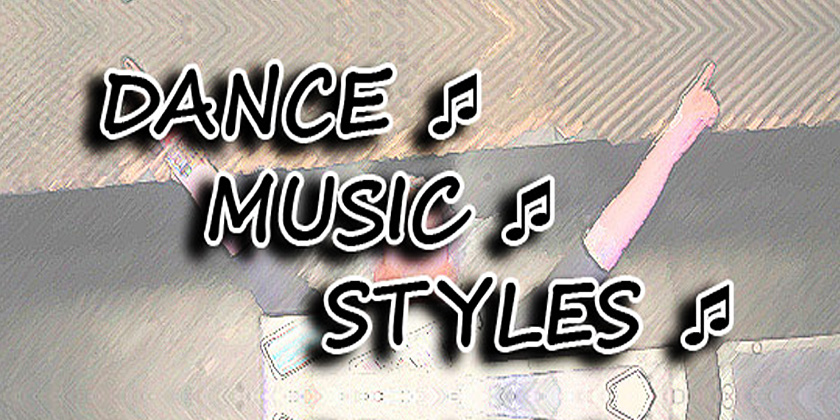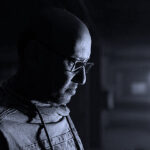Tech House
Stylistic direction in electronic music, located at the junction of Techno and House music.
Heyday: 2008
This trend emerged in the early nineties and, like Progressive House, came out of the DJ mixes. Such English DJs like Mr. C, Eddie Richards and Terry Francis in the mixes combined the traditional structure of House music with dub versions garage tracks and rigid variations on Detroit Techno. After some time, people who attended the London party Subterrain Wiggle and started making music that was played in the sets of DJs. For music composed in a style characterized by sparse percussion grooves, surround sound, deep bass line.
The most common in this direction was the masses thanks to the label Plastic City, in particular, its artists, such as The Timewriter or Terry Lee Brown Jr. They brought in this style is more Deep House sound that added richness and beauty of music. Today, Tech-House has become much broader umbrella concept explaining any kind of music, which “has not Techno, not House” or vice versa. Almost any peppy dance track with live percussion and vocals, but deep and energetic rhythm, you can call Tech House. Can not go wrong. That is not a style, but a place where there are two large and penetrate musical elements – Techno and House.
Progressive House
A kind of House music. Emerged in the early 1990s in the UK. This style House, created to express the musical progression through the melodies and bass lines.
Heyday: 1994.
The term “Progressive House” was first used in 1992 by the chief editor of the British magazine Mixmag House Phillips (born Dom Phillips). This term refers to the music played by the English DJ Sasha – U.S. House with a touch of Italian music. In the same category were the very first tracks recorded in the style of progressive House , such as Gat Decor “Passion”, Leftfield “Not forgotten” and “Song of life”, React 2 Rhythm “Intoxication”. Besides this music began to specialize labels like Guerilla, Limbo, Stress and Jackpot. All that these labels are published in the mid-90s can be considered a classic progressive House.
Relatively speaking, progressive House has survived two surge in popularity. The first was in the mid-90s, when English clubs like “Drum club” and “Renaissance” sounded interesting dance music, and one of the most prominent DJs in the time was the same as Sasha. Gradually, progressive House became popular, lighter, clearer and more accessible to the average layman. In the form of progressive-House originated progressive trance, where preference was given to the lyrics, melodies with the apparent simplicity of this music. The second wave of popularity came in the beginning of zero when Progressive House was again gloomy music, which is dominated by the rhythm and sound. The main person in this scene is John Digweed and his label Bedrock Records.
To understand what is Progressive House, it is best to listen to Sasha and John Digweed “Renaissance: the mix collection”, which was released in 1994 and has sold 100,000 copies. In 2004 this collection was reissued. You can also listen to any disc from the series “Global Underground” or “Balance” or product label Bedrock Records.
Deep House
A style of electronic dance music, which appeared at the junction of the “old” Chicago House and gospel. Birth of the style commonly referred to the end of the 1980s.
Heyday: 1999
Incorporates elements of soul music (80s), jazz, funk and Detroit Techno. Different atmospheric and dense sound. Was originally packed melodies built on chord progressions old played the ghostly sound of electric organ. The Style began to emerge at the same time with the active development of Detroit Techno and American garage. It differed from them in jazz (compared to Techno), but at the same time more minimalistic sound (compared to the garage). Since the mid 90’s style completely separated from the other styles of House. Outstanding representatives of that time were Eric Kupper, Kevin Yost, Larry Heard. A very large impact on the distribution of style labels have Guidance, Dessous, Plastic City.
Today, in section of deep House in any digital shop in the world is represented quite different music, which can be combined with a few creative principles: a relatively slow pace, beautiful melodies and soul vocal presence.
Techno
Is a genre of electronic music that originated in the mid-1980s in Detroit and its suburbs, and subsequently taken up by European producers. It is characterized by the artificiality of sound, focusing on mechanical rhythms, multiple repetition of the structural elements of music.
Heyday: 1994
It is believed that techno invented the so-called “Belvillskaya Trinity” – “initiator” Juan Atkins, “innovator” Derrick May and “engine” Kevin Sanderson. In the mid-1980s, these three black college friends from the Detroit suburb of Belleville, as they themselves say, trying to make the German Electronics in the spirit of Tangerine Dream and Kraftwerk dance more suitable for DJs and clubs. In fact, we can say that the techno arose at the confluence of genres such as synth-pop, electro and house.
Despite the fact that the first techno track assumed No UFOs from the Model 500 (one of the aliases Juan Atkins), released in 1985, the genre for a long time did not have any specific names. Earlier this music and just called House, and the new disc, and even hip-hop. Name “Techno” genre got in 1988 thanks intended for the UK compilation of Detroit dance music under the name “Techno! The New Dance Sound Of Detroit” and a number of articles in magazines The Face and NME, where this compilation advertised.
An interesting fact is that this compilation was originally supposed to call it “The House Sound Of Detroit”. But the music that fit the name of house made in Chicago, and sounded differently (see Chicago house). Then it was decided to use the word techno, which is basically used by some musicians, but more particularly associated with hip-hop. The success of this compilation played a role – “latter-day” genre called techno received recognition.
If in the U.S. techno music was just an underground phenomenon, in the UK it has surged to the main music arena of the country in the late 1980s.
Techno is a music with expensive equipment. Void in this music is often more important than anything else. Try to go out at 5 am and walk to the center of the city. And listen. Here is the emptiness of the frozen city is techno. And, apparently, the noise of cars, trains, wipers, rain – all this sounds familiar, but in the context of emptiness they find truly colossal volume and value, they protrude HD textures in the ears, they make seek contact in their combinations, they call to understand the essence civilization, are constant attempts to improve the world around him at the cost of destroying chaotic but lush and diverse nature in favor of monotonous jumble of concrete and asphalt.
Minimal
Minimal Techno subgenre characterized by atonality, ascetic, deliberately simplified the scale and melody.
Heyday: 1995
Sometimes Minimal Techno describe as music created from the “waste products” – that in other genres classified as a defect or error in the minimal Techno becomes full expressive means. Often minimal Techno track built on the implicit, almost imperceptible to the ear changes sound space. Minimal Techno genre is closely linked with such directions as ambient (ambient Techno), detroit Techno, Tech-House and glitch.
Recently, the term minimal Techno is sometimes used to refer to the fledging minimalist trend in Tech-House, despite the fact that the scale of Tech-House does not fit into the classic Minimal Techno.
One of the founders and the most famous representatives of the genre is a Canadian musician Richie Hawtin, acting under the pseudonym Plastikman. Other notable artists in this genre – Mika Vainio (Pan Sonic), Theorem and Sutekh, as well as the Russian draft SCSI-9, which is composed of Anton Cubikov and Maxim Milyutenko.
Labels specializing in minimal Techno – M_nus (Canada), Sähkö Recordings (Finland), Minimise (Ireland) and Background Records (Germany).
Acid
Acid Techno is a genre of techno that developed out of late 1980s Chicago Acid House. Acid House was essentially House Music made with a specific sound, obtained by using very distinctive instruments created mainly by Roland, such as the SH-101 and TB-303 for bass and lead sounds, and the TR-707, TR-808, and TR-909 for percussion. Acid specifically refers to the use of the Roland TB-303, or any other synthesizer designed to emulate its unique sound. While modern electronic instruments have memory banks of different sounds or patches, these machines had to be manually set by adjusting control knobs. The Acid Sound was obtained by either setting these controls to extreme parameters, or manipulating these controls in real-time as the track was being recorded, something record producers would call tweaking.
Acid Techno is about to become popular again in 2017.
Notable producers are: Amelie Lens, Emmanuel Top, Hardfloor (Ramon Zenker und Oliver Bondzio), Josh Wink, Miss Djax, Acid Maria, Claus Bachor, Phuture 303, Oliver Bondzio, Richard Bartz, Rob Acid (Robert Babicz), Woody McBride (DJ ESP), DJ Misjah.
Psytrance
Psytrance is an electronic music style characterized by arrangements of synthetic rhythms and complex layered melodies created by high tempo riffs.
Heyday: 1996
By 1998 Psytrance had became a mainstream form of music as had the growing trend of Goa Trance.
Psytrance lies at the hardcore, underground end of the diverse trance spectrum. The genre offers variety in terms of mood, tempo, and style. Some examples include full on, dark, progressive, suomi and psybreaks. Goa Trance continues to develop alongside the subgenres.
By 1992 the Goa Trance scene had a pulse of its own, though the term “Goa Trance” didn’t become the name tag of the genre until around 1994. The Goa Trance sound, which by the late 1990s was being used interchangeably with the term Psychedelic Trance, retained its popularity at outdoor raves and festivals rather than in nightclubs. New artists were appearing from all over the world and it was in this year that the first Goa Trance Festivals began, including the Gaia Festival in France and the still-running VuuV festival in Germany.
In 1993 the first 100% Goa Trance album was released, Project 2 Trance, featuring tracks by Man With No Name and Hallucinogen to name two. Goa Trance enjoyed its commercial peak between 1996 and 1997 with media attention and some recognised names in the DJ scene joining the movement. This hype did not last long and once the attention had died down so did the music sales, resulting in the failure of record labels, promotion networks and also some artists. This “commercial death of Goa Trance” was marked musically by Matsuri Productions in 1997 with the release of the compilation Let it RIP. On the back sleeve of the album at the bottom of the notes, R.I.P: Mother Theresa, Princess Diana, William Burroughs and Goa Trance was written.
While the genre may have been incubated in the Goa Trance scene it went on to proliferate globally. Its impact was felt in western Europe, Israel, North America, Australia, Japan and South Africa.







